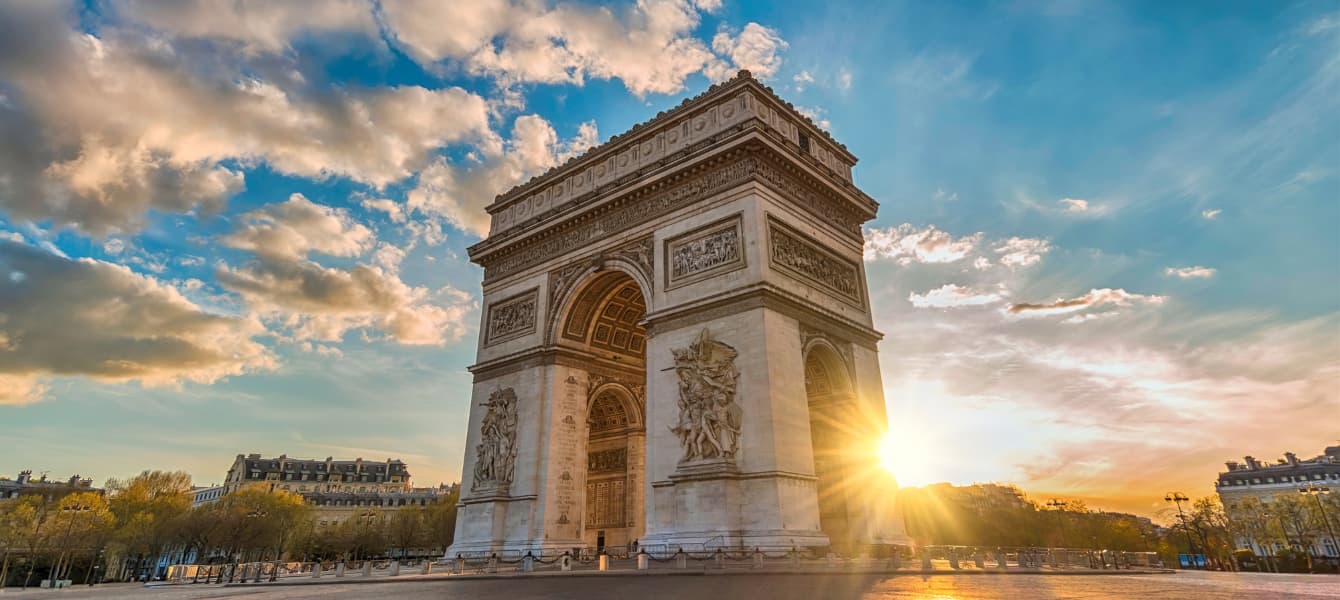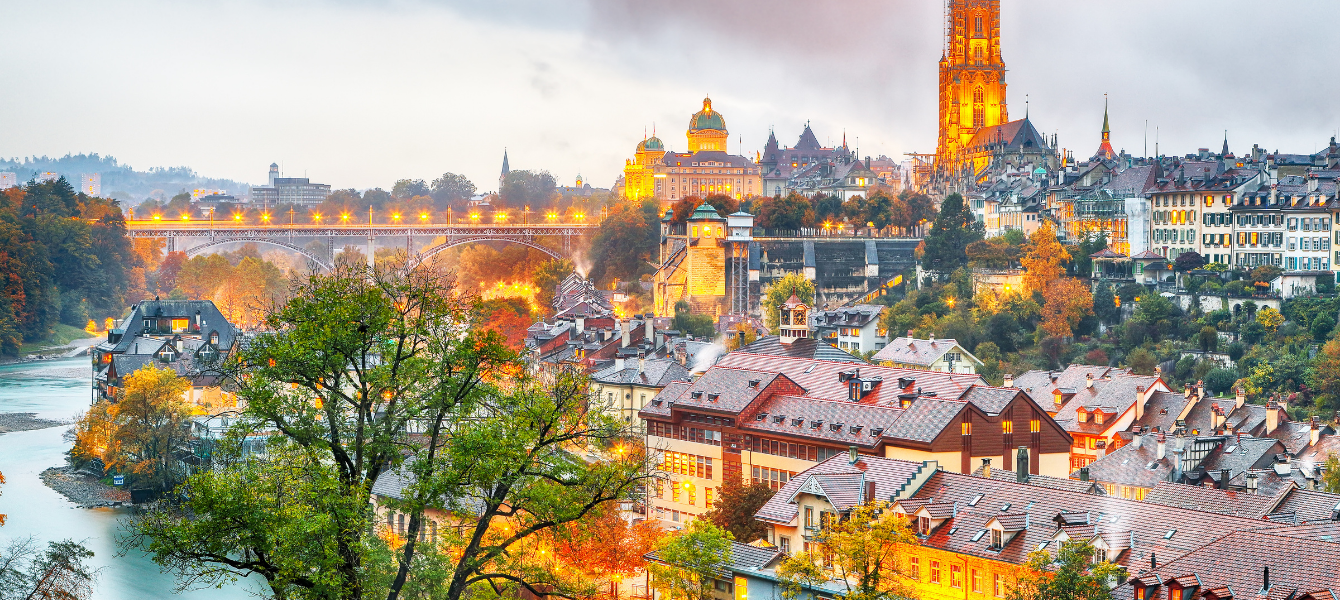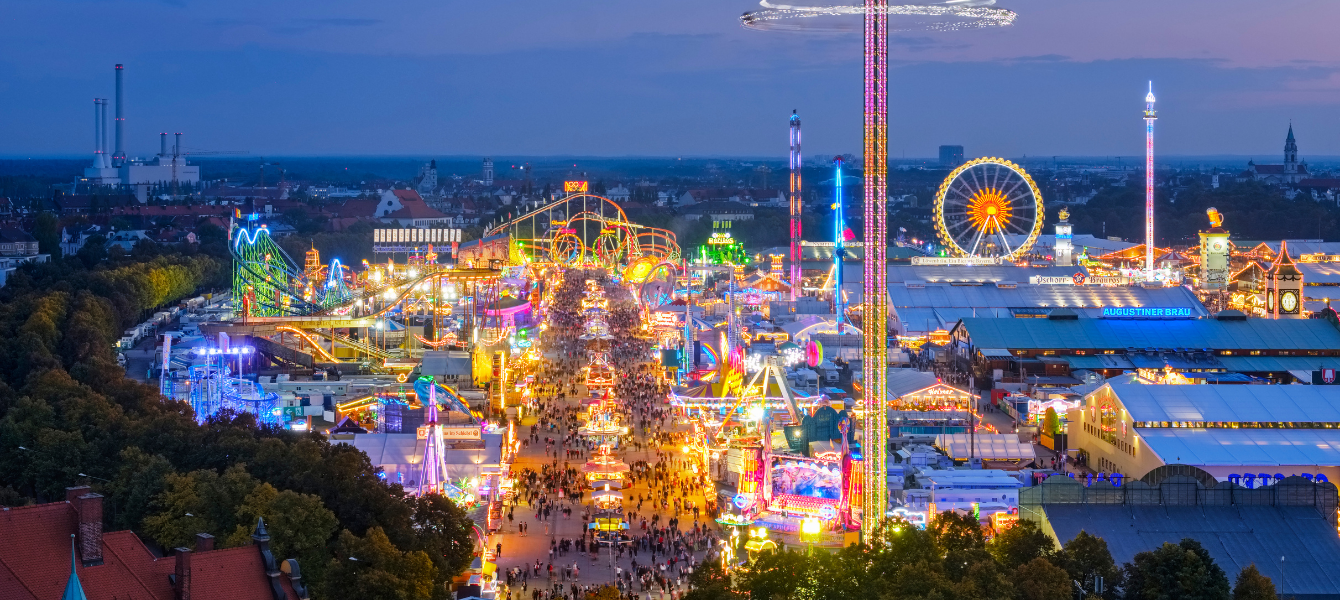Arc de Triomphe is a triumphal arch in Paris, standing at the western end of the Champs Élysées at the center of Place Charles de Gaulle, formerly named Place de l’Étoile—the étoile or “star” of the juncture formed by its twelve radiating avenues. It honors those who fought and died for France in the French Revolution and Napoleonic Wars, with the names of all French victories and generals inscribed on its inner and outer surfaces.
The Arc de Triomphe, a Parisian symbol of triumph and a testament to French history, should be on your Paris itinerary. We’ve got you covered before your visit – learn about its fascinating past, explore the architectural details, plan your visit, and discover some intriguing facts!
Quick Jumplinks
- History & Legacy of Arc de Triomphe
- Design & Architecture of Arc de Triomphe
- Interesting Facts About Arc de Triomphe
- Know Before You Go
- Frequently Asked Questions
History & Legacy of Arc de Triomphe
Construction of Arc de Triomphe began in 1806 on the orders of Napoleon I who wished to commemorate his military victories and the wars fought. It wasn’t until 1836, 30 years later, that the arch was finally completed, long after Napoleon’s defeat at Waterloo.
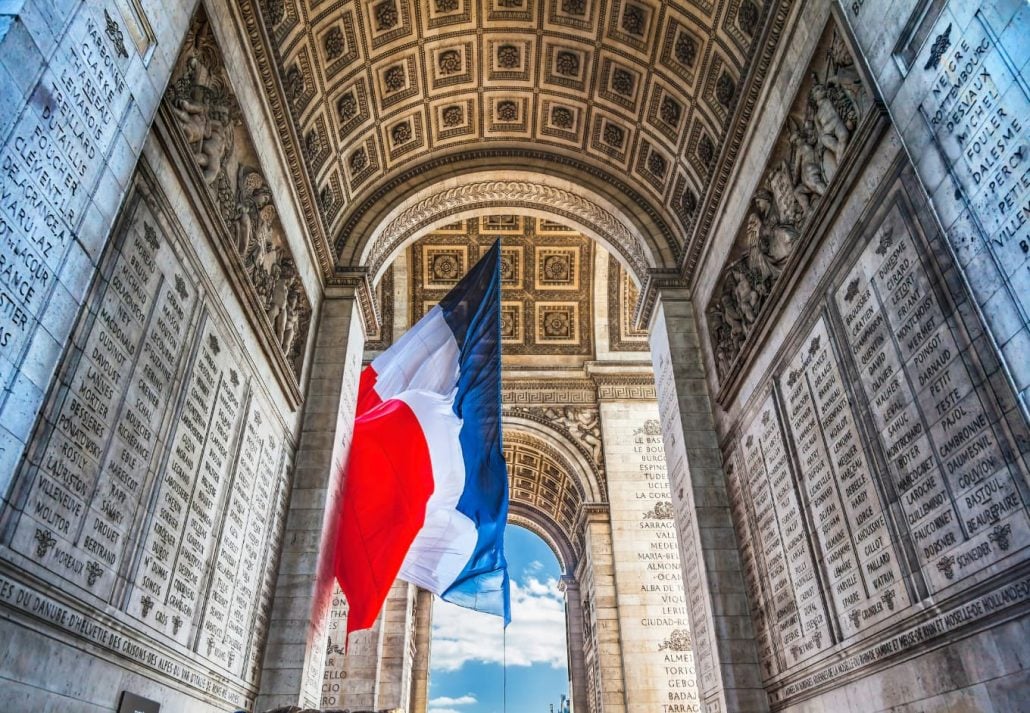
The arch has seen a lot of history since then. It was the site of the victory parade of the Allies in 1919 after World War I, and its most poignant feature – The Tomb of the Unknown Soldier serves as a tribute to the many souls lost to the Great War. The eternal flame is rekindled here every evening at 6:30 pm. Today, this iconic monument is revered as a powerful symbol of French patriotism and sacrifice.
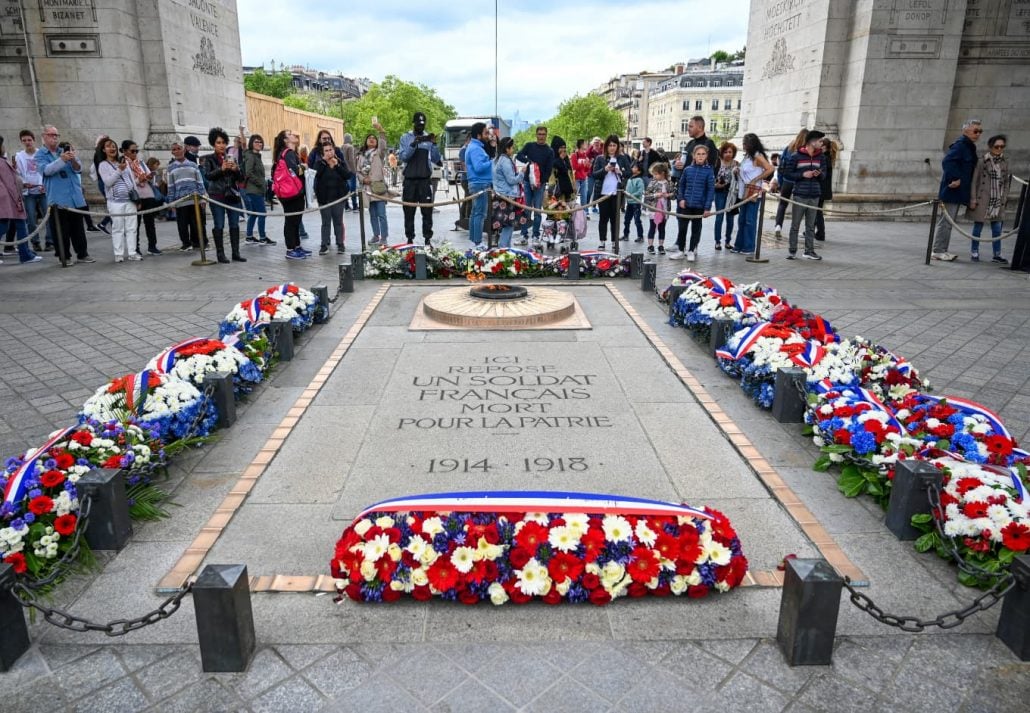
Design & Architecture of Arc de Triomphe
The Arc de Triomphe is a prime example of Neoclassical architecture, a style prevalent in the late 18th and early 19th centuries. This style drew heavily from architectural forms and principles of ancient Greece and Rome.
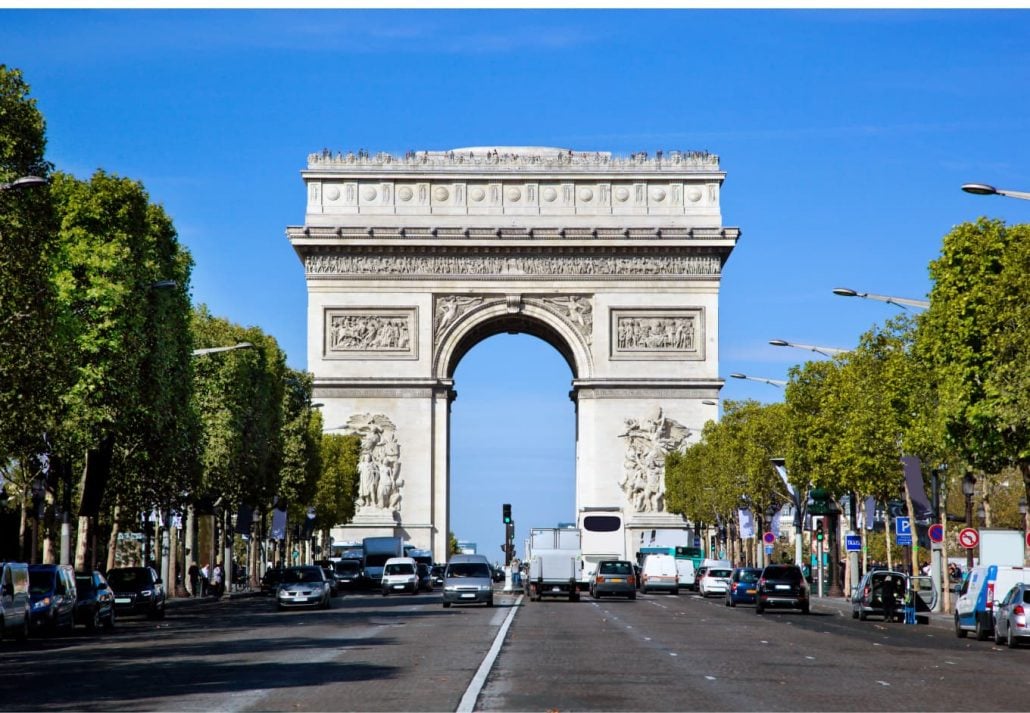
The Arc’s overall structure, with its large central arch flanked by smaller ones, is directly inspired by Roman triumphal arches like the Arch of Titus. Arc de Triomphe measures 50 meters (164 feet) tall, 45 meters (148 feet) wide, and 22 meters (72 feet) deep. The large vault is 29.19 meters (95.8 feet) high and 14.62 meters (48.0 feet) wide.
Key Architectural Elements
Material: The Arc is constructed from a light-colored sandstone called Lutetian limestone.
Form: It has a rectangular base with a large central archway and two smaller passageways on either side. Atop the main arch sits a rectangular structure adorned with sculptures.
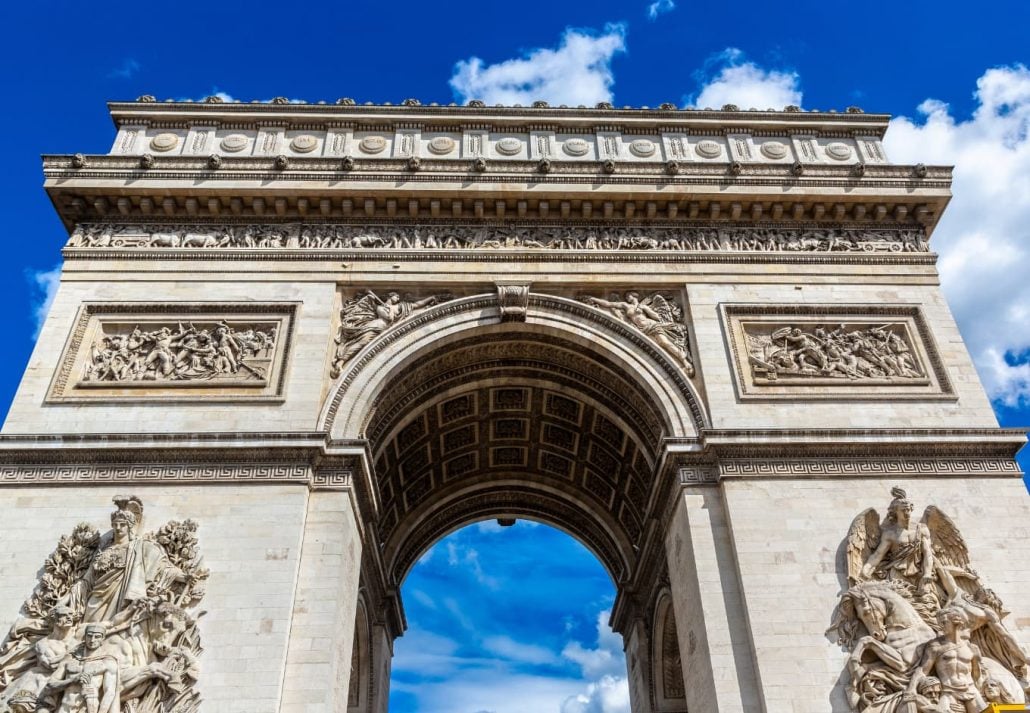
Columns and Pilasters: Massive Corinthian columns and pilasters flank the main archway, adding a sense of grandeur and referencing classical Greek and Roman architectural styles. Corinthian columns are known for their fluted shafts and elaborate capitals decorated with acanthus leaves.
Sculptural Reliefs: The Arc de Triomphe is decorated with sculptures and reliefs that depict scenes from French history. These reliefs are a major highlight, adding depth and narrative to the monument. The most famous sculpture is the one on the inner right side of the arch, called ‘La Marseillaise’ by François Rude. It depicts French volunteers marching off to war. The Triumph of Napoleon by Jean-Pierre Cortot on the left pillar commemorates Napoleon’s victory in 1810.
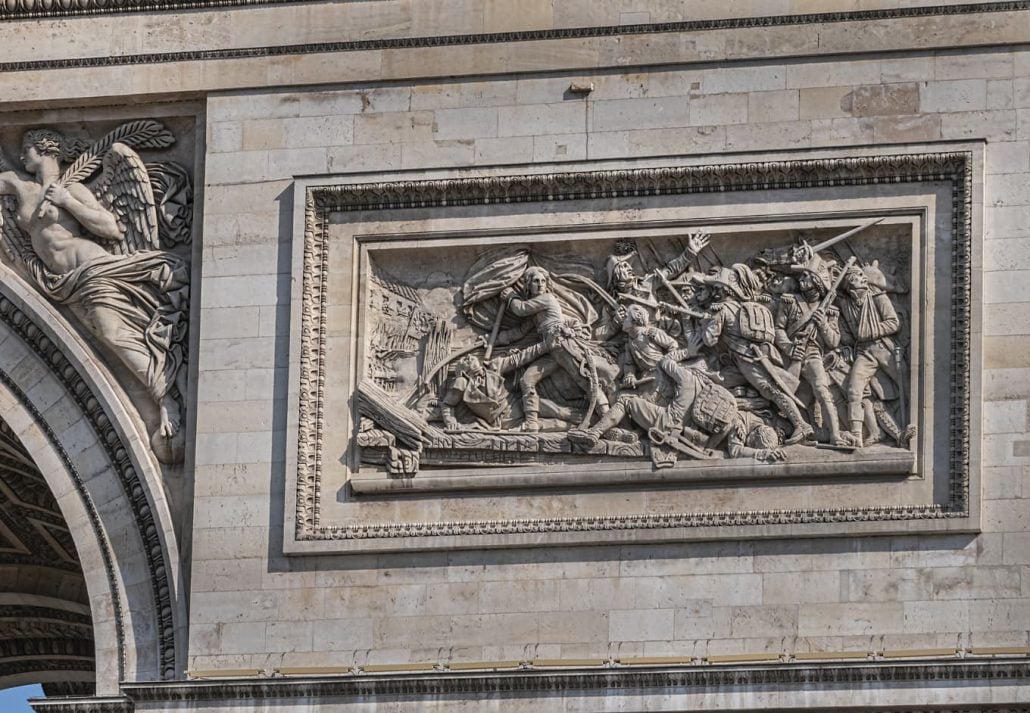
The Arc de Triomphe stands as a testament to the enduring influence of classical architecture, reinterpreted grandly and innovatively to commemorate French history and military prowess.
Interesting Facts About Arc de Triomphe
A Temporary Triumph: Though Napoleon commissioned the Arc to celebrate his victories, he never saw it completed. Construction spanned 30 years, and by its inauguration in 1836, Napoleon had been defeated and exiled.
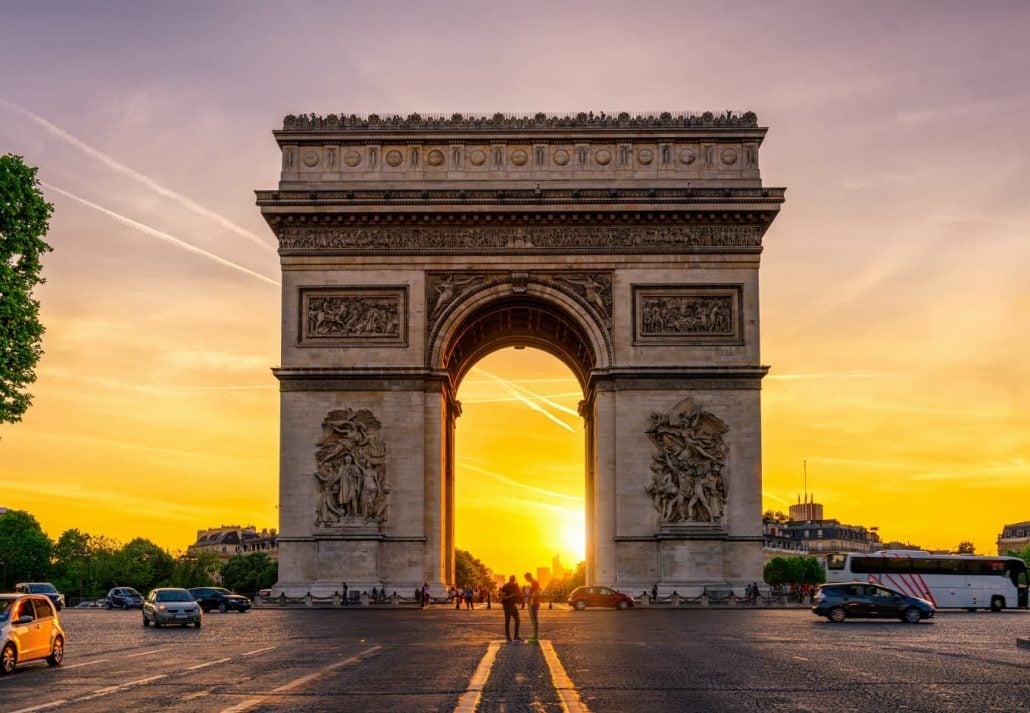
Wrapped Up in History: In 2021, for the first time ever, the Arc de Triomphe was entirely wrapped in a silvery fabric installation by artists Christo and Jeanne-Claude. This temporary artwork, titled “L’Arc de Triomphe, Wrapped,” aimed to challenge perspectives on the monument and spark new conversations about its meaning.
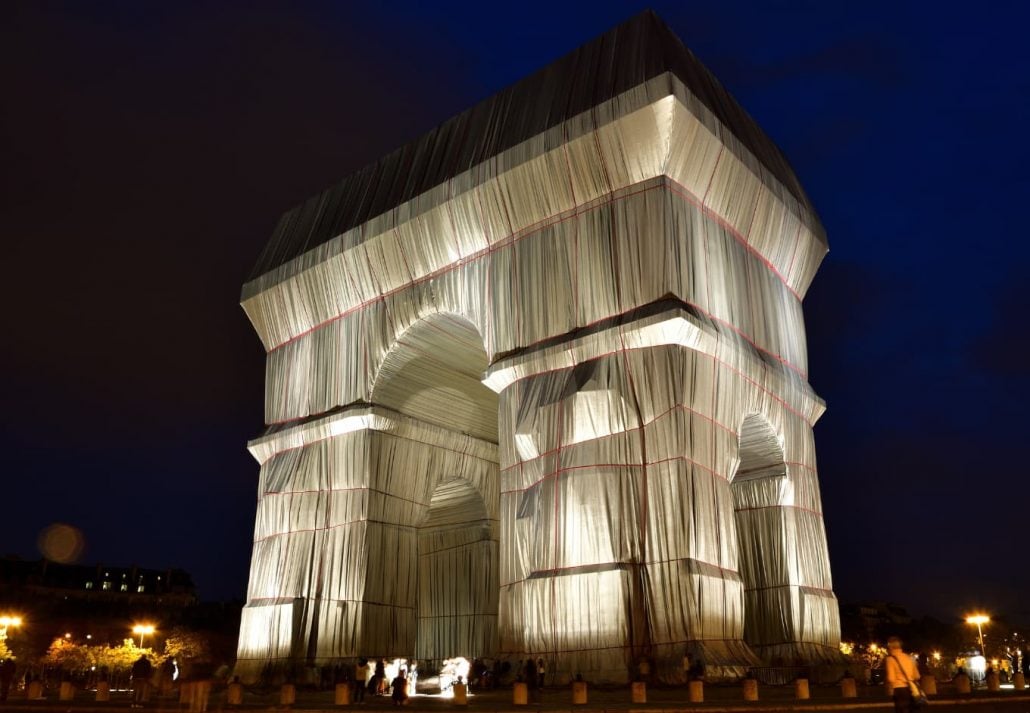
A Stage for Spectacle: The Arc de Triomphe isn’t just a static monument. It’s also a symbolic starting or ending point for major events. The annual Tour de France bicycle race concludes on the Champs-Élysées near the Arc, and the victory parade on Bastille Day traditionally begins there.
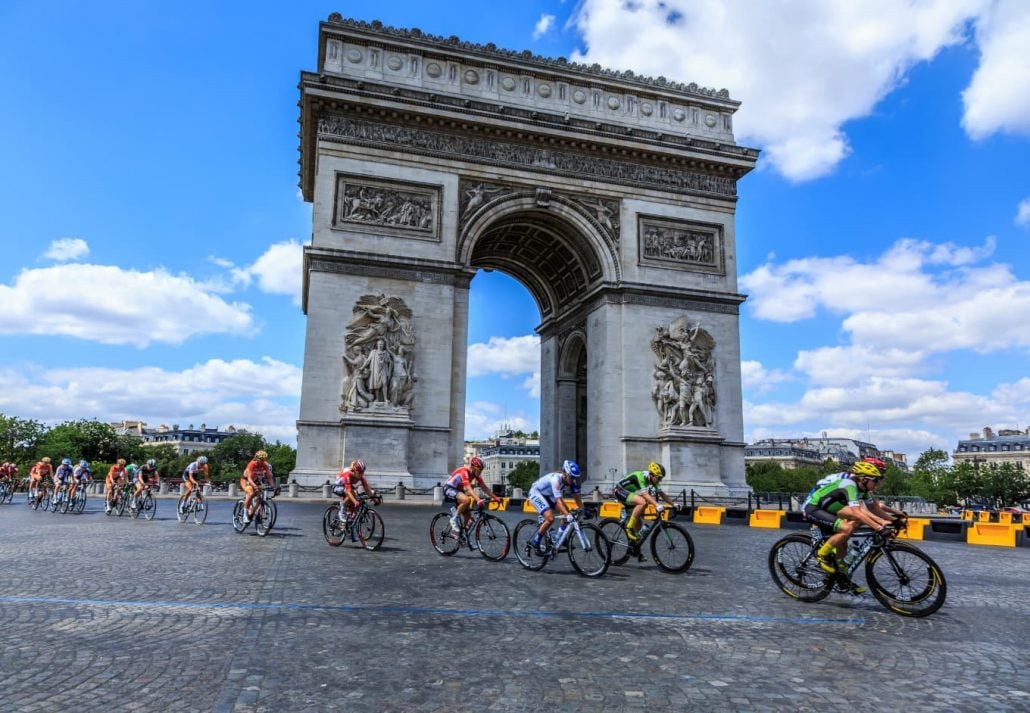
Symbolic Graffiti: While the Arc is generally well-maintained, it hasn’t escaped vandalism entirely. In 2018, it suffered from the Yellow Vests protests. Vandals sprayed the monument with graffiti and ransacked its small museum.

Know Before You Go
Opening Hours
Arc de Triomphe is open from 10 AM to 10:30 PM every day.
Getting There
Metro: The nearest metro station is Charles de Gaulle–Étoile. From here, the Arc is a walking distance. Charles de Gaulle–Étoile can be reached using Lines 1,2 and 6 or the RER Line A.
Bus: The nearest bus stop is Ch. de Gaulle Étoile Champs-Élysées. It’s a minute away from the monument.
Best Time To Visit
If you’re after the views, 6 pm or during the sunset hour is the best time to visit. The streetlights on either side of the road light up, making Arc De Triomphe look like a storybook scene. If you want to avoid the crowds, consider going early in the morning or later in the evening.
Frequently Asked Questions
What is Arc de Triomphe famous for?
Arc de Triomphe commemorates the French soldiers who fought and died in the Napoleonic Wars and French Revolution. It also houses the Tomb of the Unknown Soldier from World War I.
What is a must-see at Arc de Triomphe?
The Tomb of the Unknown Soldier Monument, the 4 Pillars, and the Proclamation Of The Republic Plaque is a must-see during your visit to Arc de Triomphe.
Can you climb to the top of Arc de Triomphe?
Yes! There’s a viewing platform at the top accessible by stairs or an elevator.
How much does it cost to enter the Arc de Triomphe?
There is a fee to climb to the top and visit the small museum inside. You can find current ticket prices online or on the official website. Admission to the Arc is free of charge for European Citizens under the age of 25.
How do I get to the Arc de Triomphe?
Arc de Triomphe is located on the western end of Champs Elysées at the center of Place de l’Étoile. It can easily be accessed by metro with the nearest station being Charles de Gaulle-Étoile station. It is located in a busy traffic circle, so be careful when crossing the street. There are underground passages that you can use to safely cross the street to get to the Arc.
CuddlyNest provides all accommodations to all travelers at the best price. Find unlimited travel inspiration on our blogs and social media channels Facebook, Instagram, and Pinterest.
Recommended Reads:
What to Do in Paris For First-Time Visitors
Luxury Hotels In Paris
Best Time to Visit Paris
